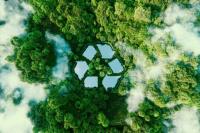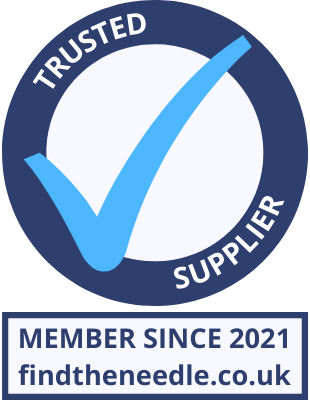 Add My Company
Add My Company
Sign In
What Does It Mean To Be Recyclable?
02-05-2023

What does it mean to be recyclable? This is a very important – and often quite complicated – question that many people trying to adopt more environmentally friendly business practices can struggle to make sense of.
Essentially, being recyclable means an object can be collected and remanufactured into new products. This should not be confused with being recycled, which means an object has already been collected and remanufactured into a new product. It’s the difference between what something IS and what something CAN BE. Plastic packaging must meet four criteria to be considered recyclable (more on this below) and although the symbols and logos on the bottom of your plastic bottles, tubs and pails can’t tell you if they’re recyclable or not, knowing what the labels mean can help you identify their recyclable potential.
Read on to find out exactly what it means to be recyclable, how to make sense of plastics labelling, why it’s important to invest in recyclability for your business and how Cambrian can guide you towards the use of more recyclable plastic packaging…
What exactly does being recyclable mean?
As we’ve already determined, packaging is recyclable if it can be collected, processed and returned to use in the form of raw materials or new products.
A product’s recyclability depends on the material it’s made of. If it’s made from a single polymer material such as PET or HDPE – as plastic bottles for example commonly are – then a product is fully recyclable. If it’s made of multiple polymers and materials, then recycling that product becomes much more complicated. Being recyclable doesn’t just depend on the packaging material itself, however, but whether there is the infrastructure in place to actually collect, sort and recycle the material. If the processes that enable recycling aren’t in place, then you can’t wind up with a recyclable product.
The problem with many recyclable objects is that although they are perfectly capable of being recycled, they end up going to waste. Every year millions of tonnes of recyclable packaging ends up in landfill and in our oceans and natural environments that could have been collected and recycled into new products. The reasons for this are several; perhaps the consumer did not place the object in the recycling bin? Perhaps they did but somewhere along the line, the recycling batch was contaminated, rendering recycling impossible? Or perhaps a lack of recycling infrastructure made recycling a no go?
Whatever the reason, the sad fact is that waste is often ‘recyclable’ in name only. Read on to find out what makes plastic packaging recyclable and what those labels on the bottom of your plastic bottles, tubs and pails really mean.
Is It Recyclable? Making Sense Of Plastics Labelling
To be considered recyclable, plastic packaging must meet four conditions.
It must be manufactured from plastic that is collected for recycling.
It must be sorted into defined streams for recycling purposes.
It can be processed and recycled with commercial recycling processes.
The recycled plastic becomes a raw material that is used in the production of new products.
The Universal Recycling Symbol (or Mobius Loop) is the most commonly used environmental symbol indicating that a product or packaging is potentially recyclable. A Mobius loop with a percentage in the middle indicates how much recycled material was used in the production of the material. Many people assume that the variety of different symbols and logos that appear on the bottom of their plastic bottles, tubs and pails will tell them if it’s recyclable or not. However, these symbols – called a resin identification code – simply identify what sort of plastic was used to make a product rather than whether or not it’s recyclable.
There are seven different types of plastic categories (each with their own resin identification code) that can tell you the type of plastic your product is manufactured from. Knowing about the type of plastic your product is made from and whether that plastic is capable of being recycled can go a long way to helping you determine whether it’s recyclable or not.
Polyethylene Terephthalate (PET) and Recycled Polyethylene Terephthalate (rPET)
PET is a highly recyclable material (mainly used to make plastic bottles) and nearly 94% of UK councils will collect PET plastic bottles either from your doorstep or from recycling centres.
High Density Polyethylene (HDPE) and Recycled High Density Polyethylene (rHDPE)
This is a very common rigid plastic mainly used to make shampoo bottles, milk bottles, jerry cans and chemical cleaners. It can easily be recycled to make more HDPE.
Polyvinyl Chloride (PVC)
Can be rigid (used in window and door frames) or flexible (used as insulation for electric wiring). It is notoriously difficult to recycle.
Low Density Polyethylene (LDPE)
Bin liners, carrier bags and six pack rings – some of the most polluting plastic products – are made from LDPE. LDPE is in fact recyclable but just 5% of what is produced gets recycled.
Polypropylene (PP)
Used for tubs and pails, caps and closures and microwavable meal trays, PP is often chosen for containers that need to withstand high temperatures due to its high softening point. It is fully recyclable where facilities exist.
Polystyrene (PS)
Used in yoghurt pots, foam fast food boxes and plastic cutlery, it is famously difficult to recycle.
Everything Else
Other plastics that do not fall into the above categories, such as polylactide (used in 3D printing) and polycarbonate (used in roofing).
Now you know the seven different types of plastic and what their labels mean, it can be easier to work out whether or not a plastic product would be recyclable or not and whether that packaging product would be a good fit for your business. If you’d like to talk to us about which packaging would be the best fit for your business needs, don’t hesitate to get in touch.
Why It’s Important To Invest In Recyclability
Investing in recyclability means using recycle-friendly materials in your packaging that are designed specifically to support its journey through the industrial recycling process. This is important mainly because most consumers now expect the brands they pick up off the shelf to be packaged in a sustainable way and for that packaging to be fully recyclable. As highlighted in a previous Cambrian blog, 81% of consumers have indicated that they prefer eco-friendly packaging materials while 52% of consumers have even changed brands in favour of those with more sustainable packaging.
Whether your business is food manufacturing or manufacturing products for the healthcare, animal healthcare, commercial cleaning or automotive industries, investing in recyclability is vital to meet consumer expectations and demand and to ensure the commercial viability of your business. Read more about the best ways to upgrade to more sustainable packaging in a previous Cambrian blog here.
How Cambrian Can Help: Our 5-Step Process
At Cambrian, we believe that collecting and reprocessing conventional plastic waste for further use as a constituent in the manufacture of plastic packaging is the best way to invest in recyclability.
From our PET and rPET-manufactured plastic bottles, our PP-manufactured tubs and pails (including our new 75% recycled pail range) and our HDPE and rHDPE-manufactured jerry cans, to our Zero PPT (Plastic Packaging Tax) range – which contains over 30% recycled plastic content – and our Ecycle™ range – which contains 100% recycled material – we make it our mission to stock and supply plastic packaging products that are made from highly recyclable and fully recyclable material.
As one of the first plastic packaging suppliers in the UK to achieve Carbon Neutral status, our passion is finding the plastic packaging solutions that work perfectly for our clients’ business AND the environment. A big part of that is guiding our customers towards more recyclable packaging through our 5-step process, which gives you a roadmap for upgrading to more recyclable and therefore sustainable packaging.
1. FREE consultation – a chat about your packaging needs at a time convenient to you.
2. Analyse current packaging – to see the level of recyclability it’s capable of, how it reflects your brand values and the chemical compatibility required.
3. Specify more sustainable and cost effective packaging alternatives. For example, our Zero PPT product range – which contains over 30% recycled plastic content – and our Ecycle™ range – which contains 100% recycled material are both fully recyclable and totally exempt from Plastic Packaging Tax (PPT).
4. Send out samples of these alternatives for you to test independently against your product. Get in touch today for your free samples!
5. Deliver your new packaging directly to you in some of the shortest lead times out there.
For more information on What Does It Mean To Be Recyclable? talk to Cambrian Packaging
Enquire Now
More News
List your company on FindTheNeedle.

